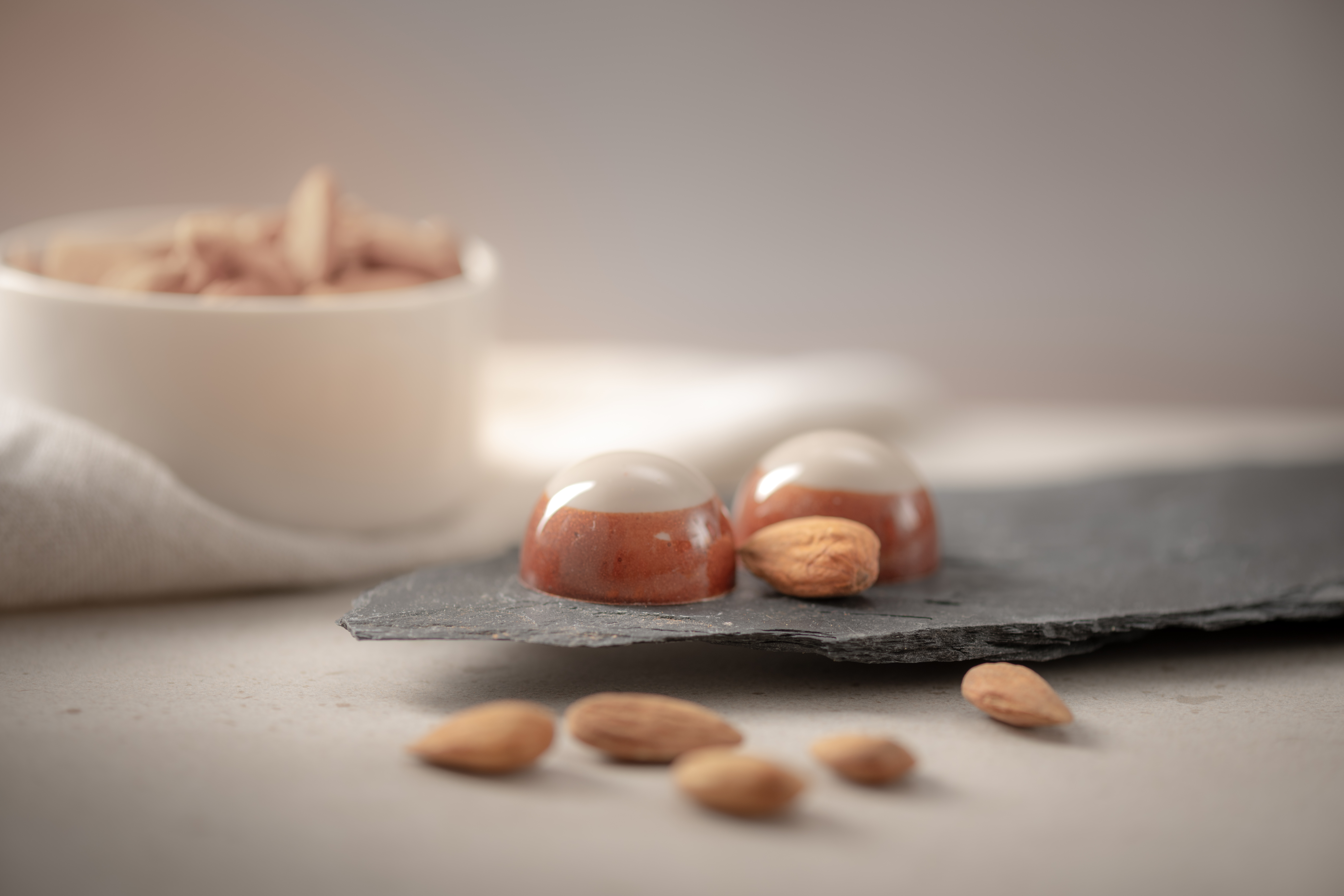What makes a winning chocolate praline?

Ralf Wellauer, Corporate Pastry Chef at Felchlin and passionate chocolatier with significant and extensive expertise, reveals what is important in the Praliné à l'eau-de-vie competition. The Concours du Praliné à l'eau-de-vie will be held for the third time at the end of January 2026. The aim is to create a praline containing gin from a Swiss distillery - with or without alcohol - according to all the rules of the confectioners and chocolatiers trade.
What makes a high-quality praline for you?
A high-quality praline depends on the perfect balance and the very highest quality of the individual ingredients and components. The right choice of couverture and a moment of surprise at the first bite are also crucial. If the praline triggers a spontaneous ‘wow’, the objective has been achieved.
Which flavours combine particularly well?
Personally, I like to differentiate between ‘warm’ and ‘cold’ flavours, alcoholic components such as whisky or rum are more at home in the ‘warm’ flavour world. Gin, on the other hand, is versatile - it combines clear, fresh flavours such as herbs, citrus fruits, berries, and preserved lemons. In principle, however, gin can be combined with most ingredients. Food pairing models such as flavour wheels help to create successful combinations - they complement your own sense of taste perfectly.
What are the most important steps in the production of high-quality pralines?
Structured work is essential. The aim is to create a harmonious composition that will delight numerous people with its flavour. The couverture must perfectly harmonise with the fillings. The final step is to taste the chocolates together - this is the only way to obtain valuable and objective feedback.
Please tell us the most common mistakes in praline production.
Technological errors or a poor production method. There is often a lack of clearly defined flavours, harmony of ingredients or textural variety.
What factors influence the shelf life of pralines - with and without alcohol?
The main determining factors here are modern production methods, hygiene, the free water activity value (AW), the sugar content and the proportion of dry matter. Alcohol also acts as a natural preservative and extends the shelf life.
Gin (also non-alcoholic) is at the centre of the current competition. What are the most important tips for participants?
A clear flavour concept, harmonious composition and targeted selection of the right gin are key here - not everyone is equally suitable or compatible for making pralines. Inspiration from the bar and cocktail world can supply invaluable inputs. Important: the texture, creativity and craftsmanship are the key factors to success.
What is the difference between the alcohol-free gin praliné and the one made with alcohol?
Technologically speaking, the main difference lies in the base: alcohol vs. water. Alcohol-free gin lacks the flavour component of alcohol, which is why there are sensory differences, although the botanicals used are the same in both types. Legally, alcohol-free gin in the EU is not a ‘gin’ in the sense of the current regulations - this must be considered and modified accordingly in both the product labelling and communication.
Is there a perfect consistency for a praline filling?
The perfect mouthfeel is crucial – though this varies from person to person. However, a melt-in-the-mouth, creamy texture is appreciated by most consumers and is therefore often the desired objective.
What should participants look out for in the decor and the praline mould?
Competitions are a stage for creativity. You should demonstrate what you can do, regardless of its feasibility in production - unless otherwise required. Moulds should be contemporary and ideally reflect the theme of the praline. A personal, individually developed praline mould is also a strong distinguishing feature.
What special ingredients can improve the quality and flavour of pralines?
Only use first-class ingredients that are as fresh as possible - unprocessed and flavoursome. Using the appropriate couverture is a significant factor, as is technological expertise: for example, the specific use of various types of sugar or fibre, which optimise both the taste and texture.
The Concours du Praliné à l'eau-de-vie
The Concours du Praliné à l'eau-de-vie will be held for the third time at the end of January 2026. The aim is to create a praline containing gin from a Swiss distillery - with or without alcohol - according to all the rules of the confectioners and chocolatiers trade. The competition was initiated by Patrick Zbinden, jury president and Ambassadeur du pain et du chocolat of the Swiss Association of Master Bakers and Confectioners (SBC). He is organising this successful event in collaboration with the SBC and the Swiss distillers. All SBC members are eligible to take part. Max Felchlin AG is the main sponsor of the Concours du Praliné à l'eau de vie.
Register now: swissbaker.ch/praline

We live with passion and responsibility to bring enjoyment from the origin around the world.
 Professional area
Professional area





